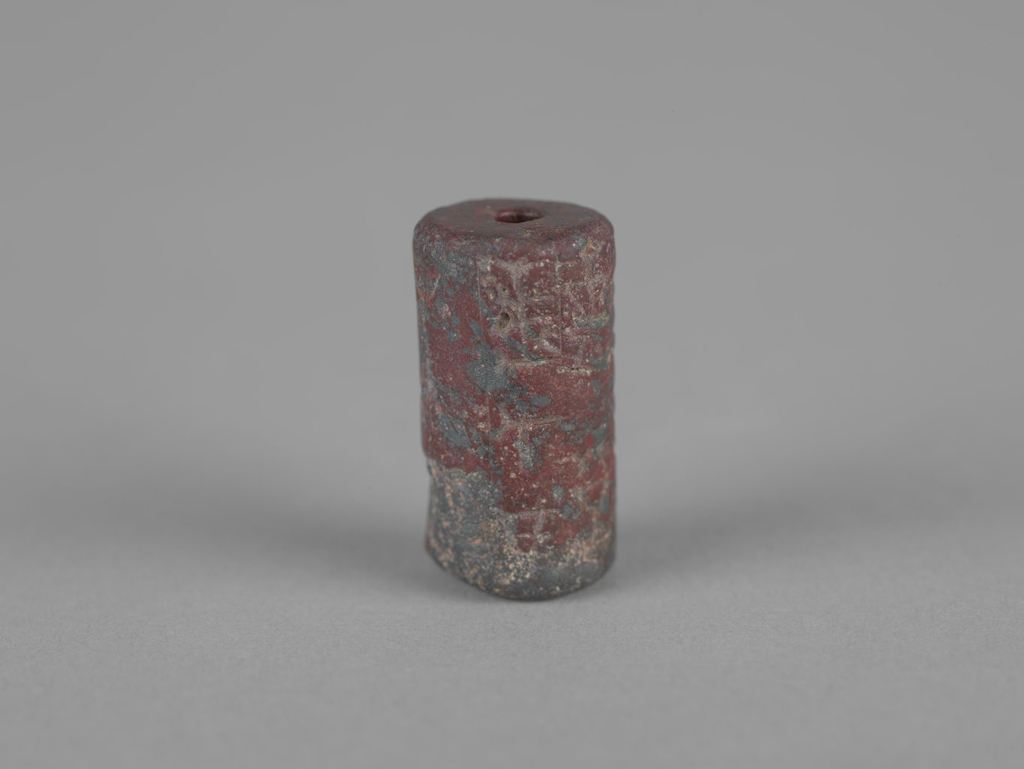Belonging stylistically to the Old Babylonian period (ca. 2000–1600 BCE), this small hematite cylinder seal depicts a seated figure with a trident in one hand, along with a written inscription. While the imagery is heavily worn, the inscription is better preserved. It is a prayer to a storm god known as Adad, who the seated figure in the image most likely represents. The figure may be wearing a horned headdress, a typical feature of deities in Old Babylonian art, and a trident is a common attribute of Adad in other images.
The Old Babylonian period, sometimes also known as the First Babylonian Empire, was a time when the city of Babylon had control of large areas of Mesopotamia. Babylon is a city along the Euphrates River in a region of Mesopotamia known as Akkad. It is the period of the Old Babylonian king Hammurabi, best known for his law codes.
In ancient Mesopotamia, cylinder seals would be regularly used in administrative practices. Impressions from the seal could be made on wet clay, marking objects like jars, doors, or clay tablets. This cylinder seal, like many examples, is pierced so it could be worn on a cord and easily accessible. This particular seal entered the Menil Collection as a gift from Natalie Strauss Midlo, who acquired it in 1962. Its archaeological provenience, however, is unknown, and seals have been found in a wide variety of contexts because of their portability.



